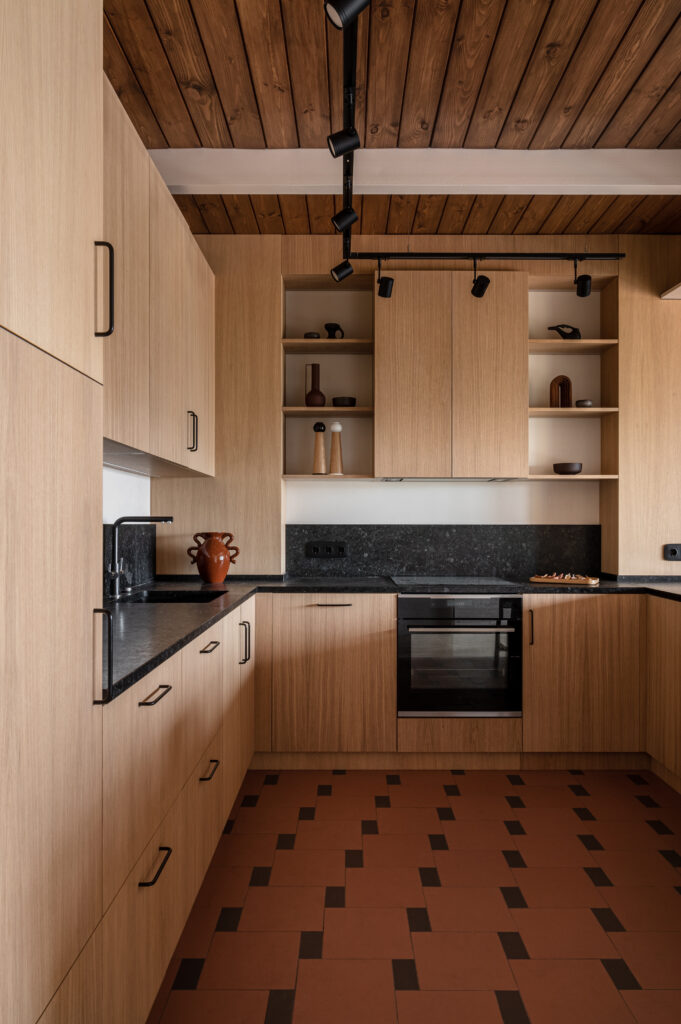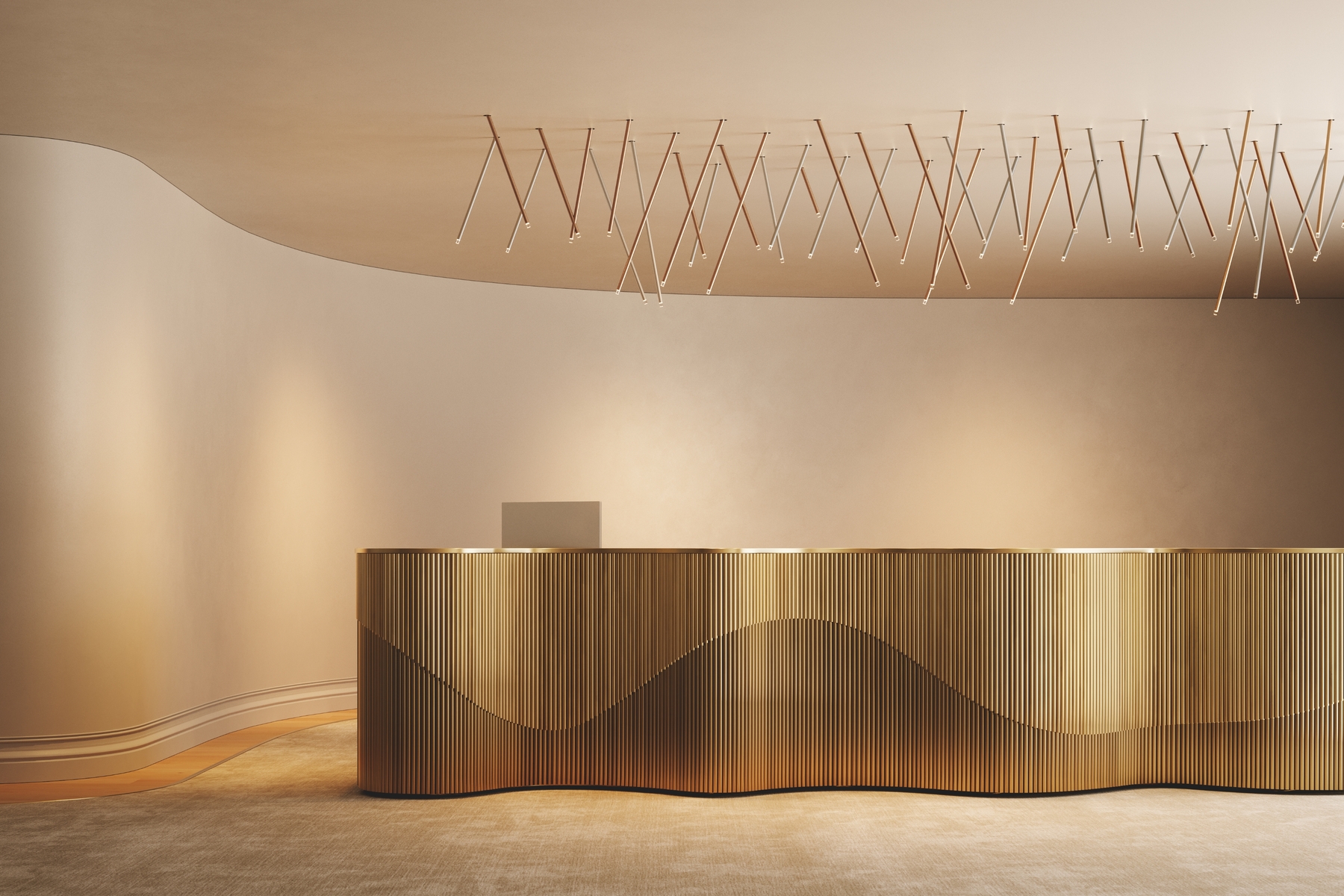Header: Yevhenii Avramenko
Yana Molodykh presents the design of a typical Pied-à-Terre apartment for a family living in a Kyiv suburb. As a family that often comes to the city centre on weekends to immerse themselves in social and cultural life, the apartment offers a comfortable environment for time spent with family and friends.
The designer faced the task of turning the technical shortcomings of the room into advantages, placing everything necessary in the space between the metal columns and the walls. The interior of the apartment corresponds to the context of Podil, one of the most picturesque districts of Kyiv.


The Podil vibe
The clients chose an apartment in Podil as their city residence because that district of Kyiv reminds them of Kherson, a resort town by the sea in southern Ukraine, where they are both originally from. Podil also has a light and eclectic character, with access to the water via the Dnipro embankment.
Podil is one of the city’s oldest districts, which historically was a centre where craftsmen and traders were located. Now, Podil is a district known for welcoming visitors from all over, its mix of cultural traditions forms its cosmopolitan flavor today. To this day, the area retains its powerfully adventurous charm, with eclectic and occasionally whimsical architecture which sometimes positions modern buildings next to restored buildings of the early 20th century.
Numerous cafés and shops occupy the ground floors and luxurious high-rise hotels rise near empty industrial shops. The pearls of Podil are the monuments of modernism: the Zhytniy Market and the Zhovten Cinema. On the eighth attic floor of a new building near the legendary cinema, an apartment offers spectacular views of the rooftops of Podil.
“I aimed to convey the cultural context of Podil through the interior [of the apartment] and to mix, taking as a basis the elements of classical and modernist architecture, and add the colors of constructivism and the background wood inherent in the decoration of attic rooms.”
Yana Molodykh
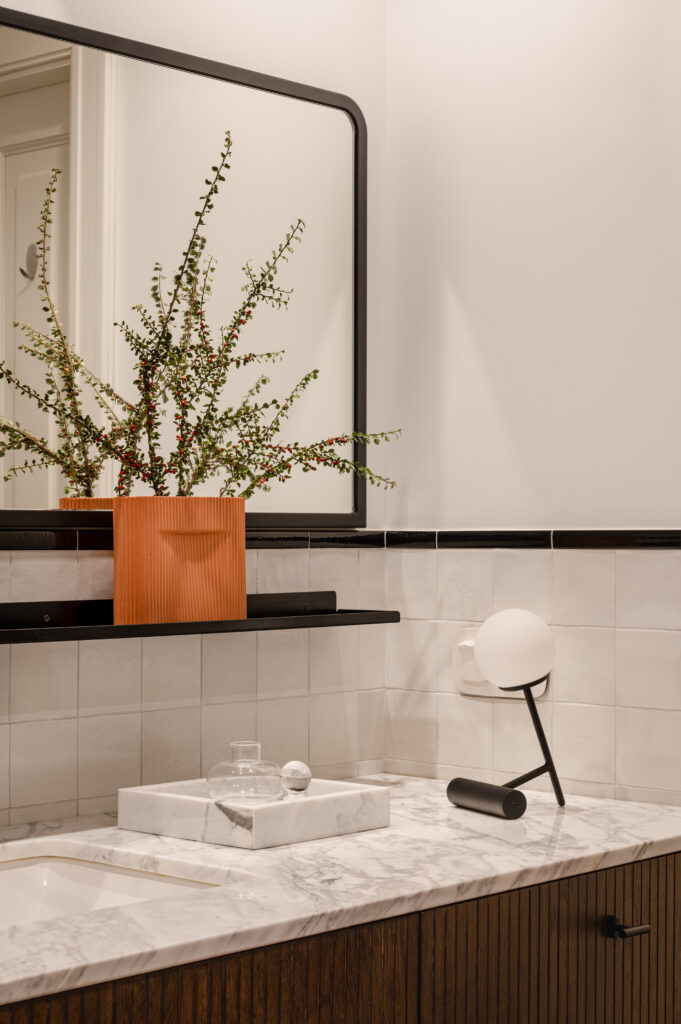
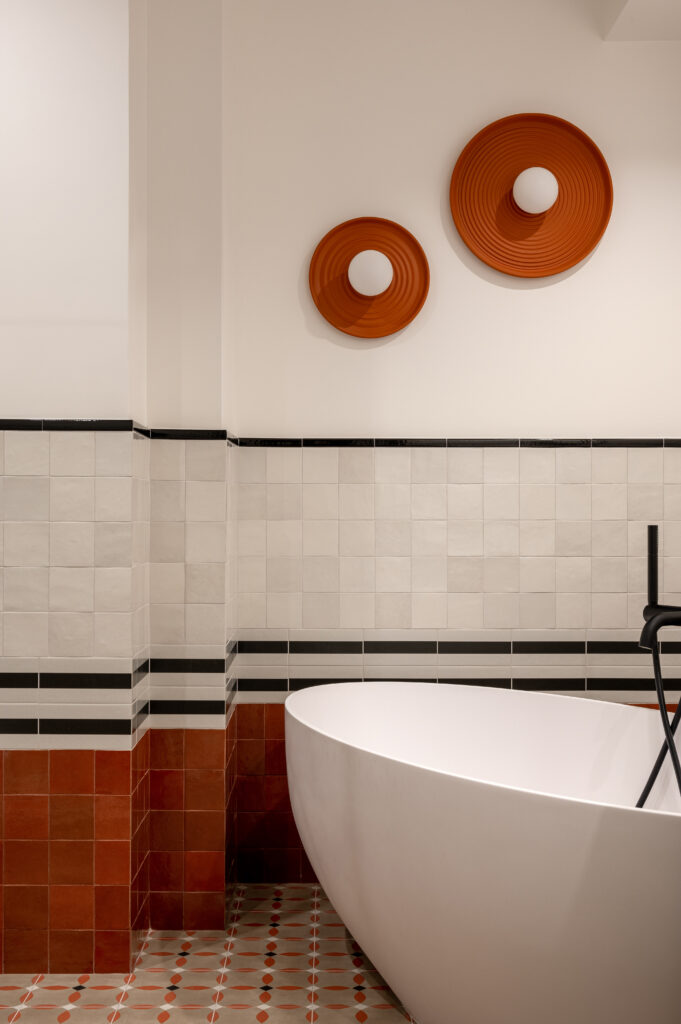
An Airy Interior
The attic space under the roof had some design features that required consideration. Beams and metal columns were left exposed, only partially hidden behind shelves in the living room and closets in the bedroom. That was how the designer turned the apartment’s shortcomings into advantages.
“The light sofa and armchairs, the shape of the table and chairs, were not chosen by chance – it was important not to burden the space with massive objects. Instead, I wanted to create a light, airy atmosphere of life under the roof.”
Yana Molodikh
A must-have was a great living space since the owners like to cook and host guests, so the designer created a comfortable and functional kitchen, plus a cozy living room. An “airy” accent that definitely contributed to the light ambience of then space was an Akari floor lamp from Vitra (designed by Isamu Noguchi).

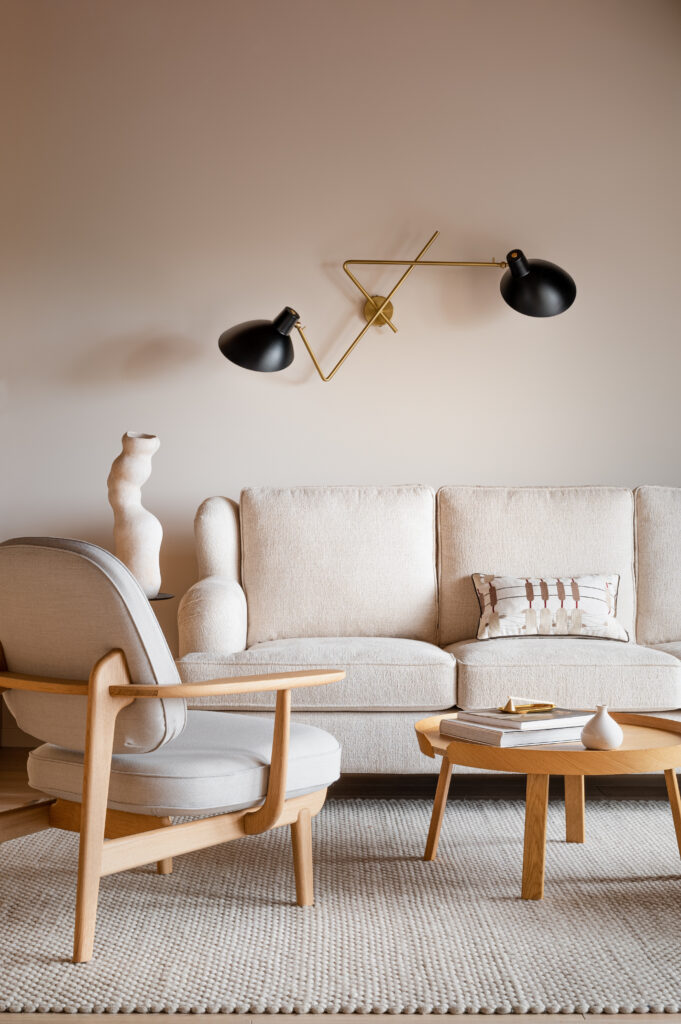
The bedroom is the smallest room, with an area of 6.4 square meters. It has everything for a comfortable stay: a bed raised on a podium, a wardrobe behind a column in a niche, shelves and drawers near the bed. The massive beam on the ceiling was sewn into a plasterboard box to visually lighten it and avoid the feeling of a heavy metal structure overhead.
The entrance area has tiles on the floor and a blue accent door. That small hallway is a buffer space between the street and the house. There is also a separate dressing room, where the wardrobes are inserted between the structures of beams and columns. It was essential for the apartment owners to have a bathtub and a shower cabin. Tiles in the bathroom are a tribute to constructivism.
“I mixed collections of four different brands of tiles to reproduce the aesthetics, shape, and color inherent in constructivism. Accents were terracotta ceramic sconces on the wall – an object created by the Ukrainian designer Yulia Kononenko.”
Yana Molodikh
The colour range of the interior is a combination of light wood shades with modernist accents of red, black, blue, terracotta, and white. The walls are painted with Argile paint from the “earth colours” collection with a warm shade of wet clay. “As a child, I helped my grandmother whiten the walls of the house in Polissia with clay diluted with water,” shares Yana Molodikh. “Our whitewash had just the same warm shade of white.”
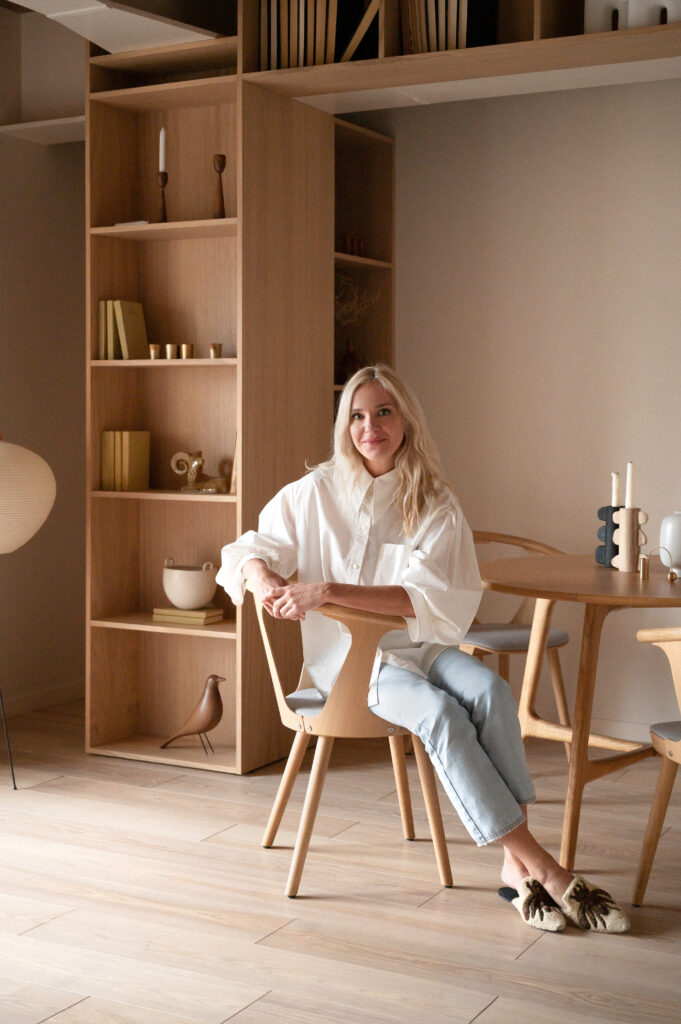
Photo credit: Yevhenii Avramenko
The Clients
The owners of the apartment are a married couple in their early 60s. After retiring after 35 years in the IT industry, the husband became fond of woodcraft and equipped a small workshop in their house. The wife is a marketer by profession and has also recently retired. The couple enjoys listening to jazz, traveling, cooking, and entertaining guests.
Their son and his wife have their own craft wood furniture workshop, “Buro 150”, and they were responsible for referring the parents to Yana Molodykh as a designer for their apartment, recognizing similarities in their collective worldviews.
